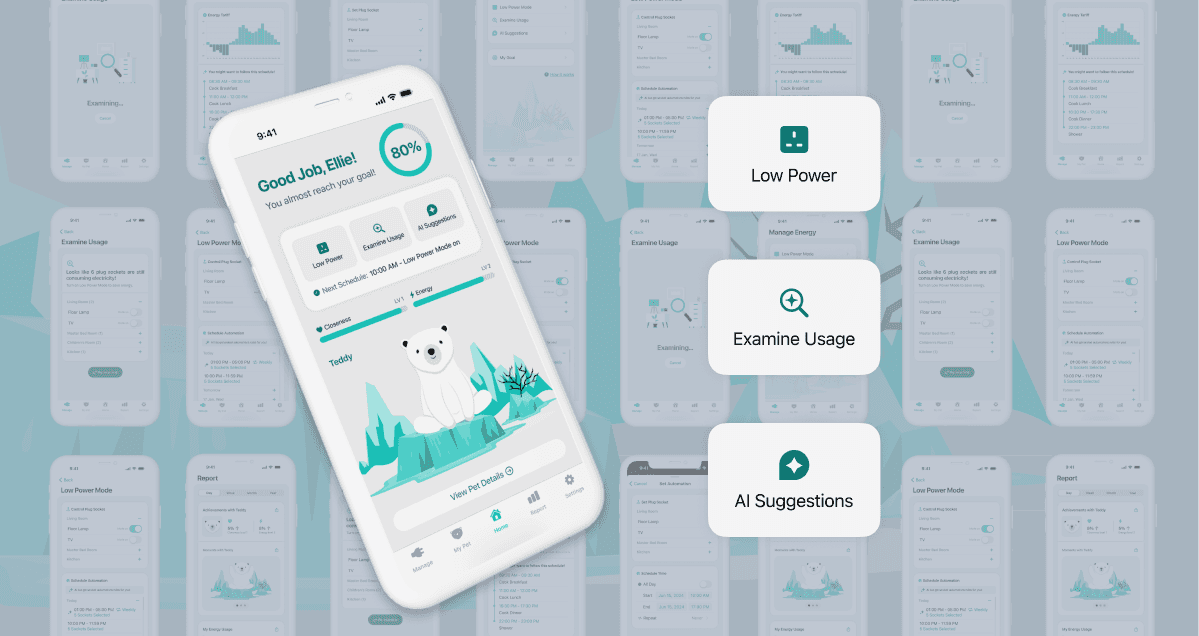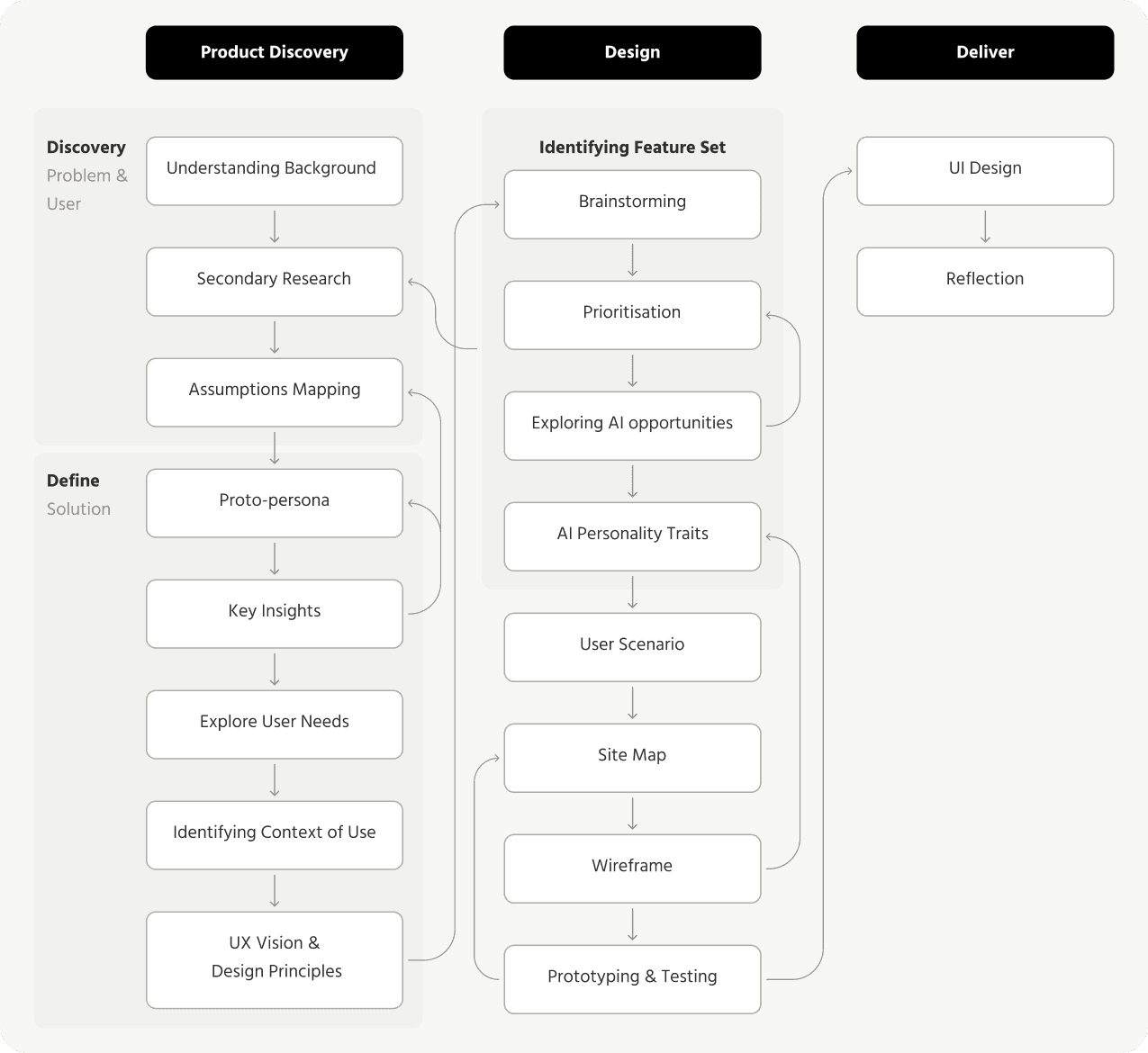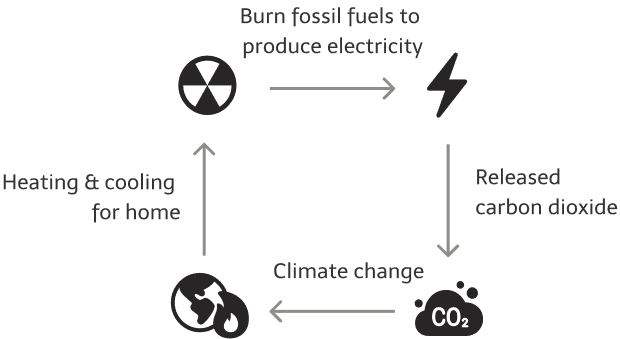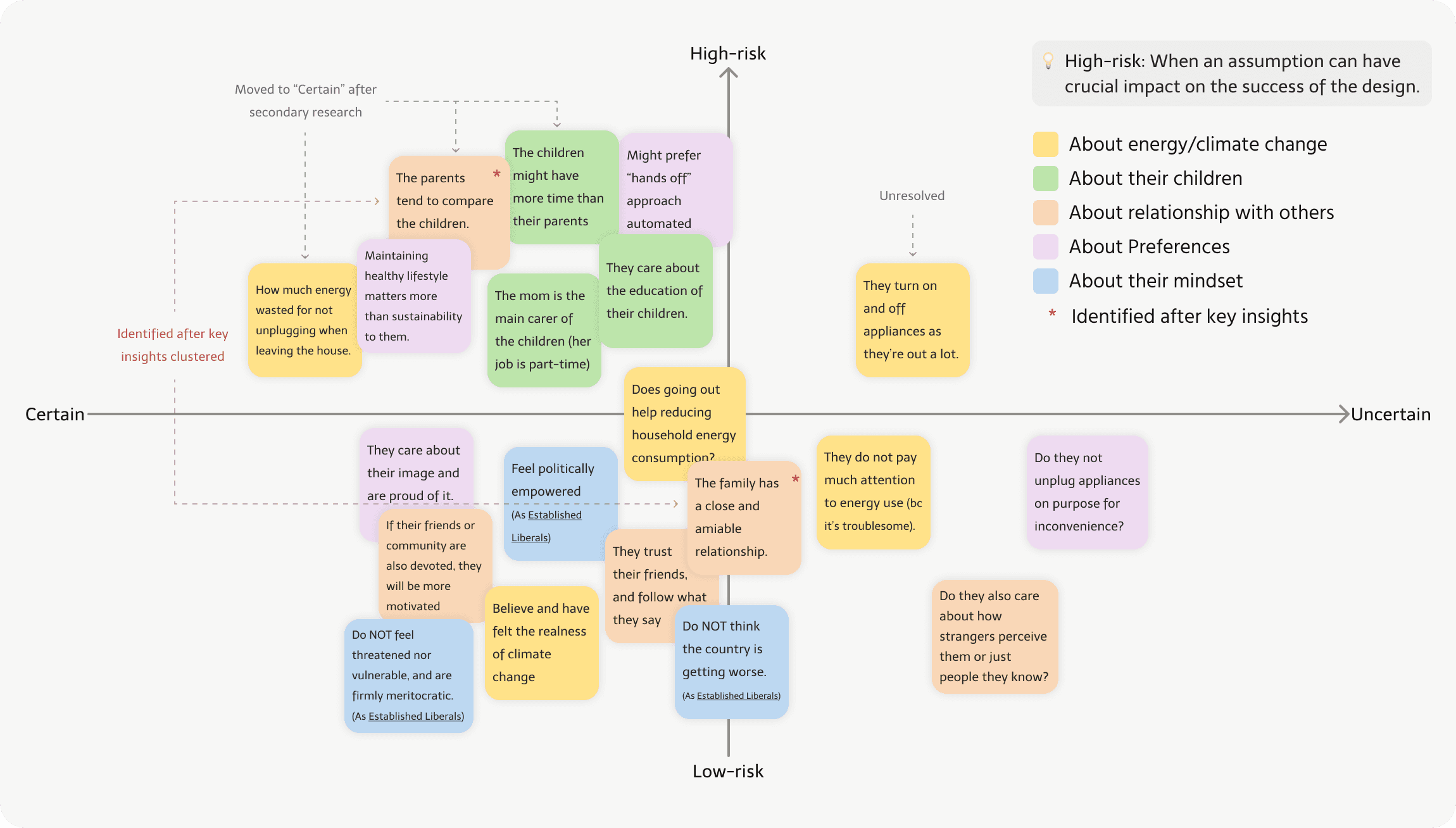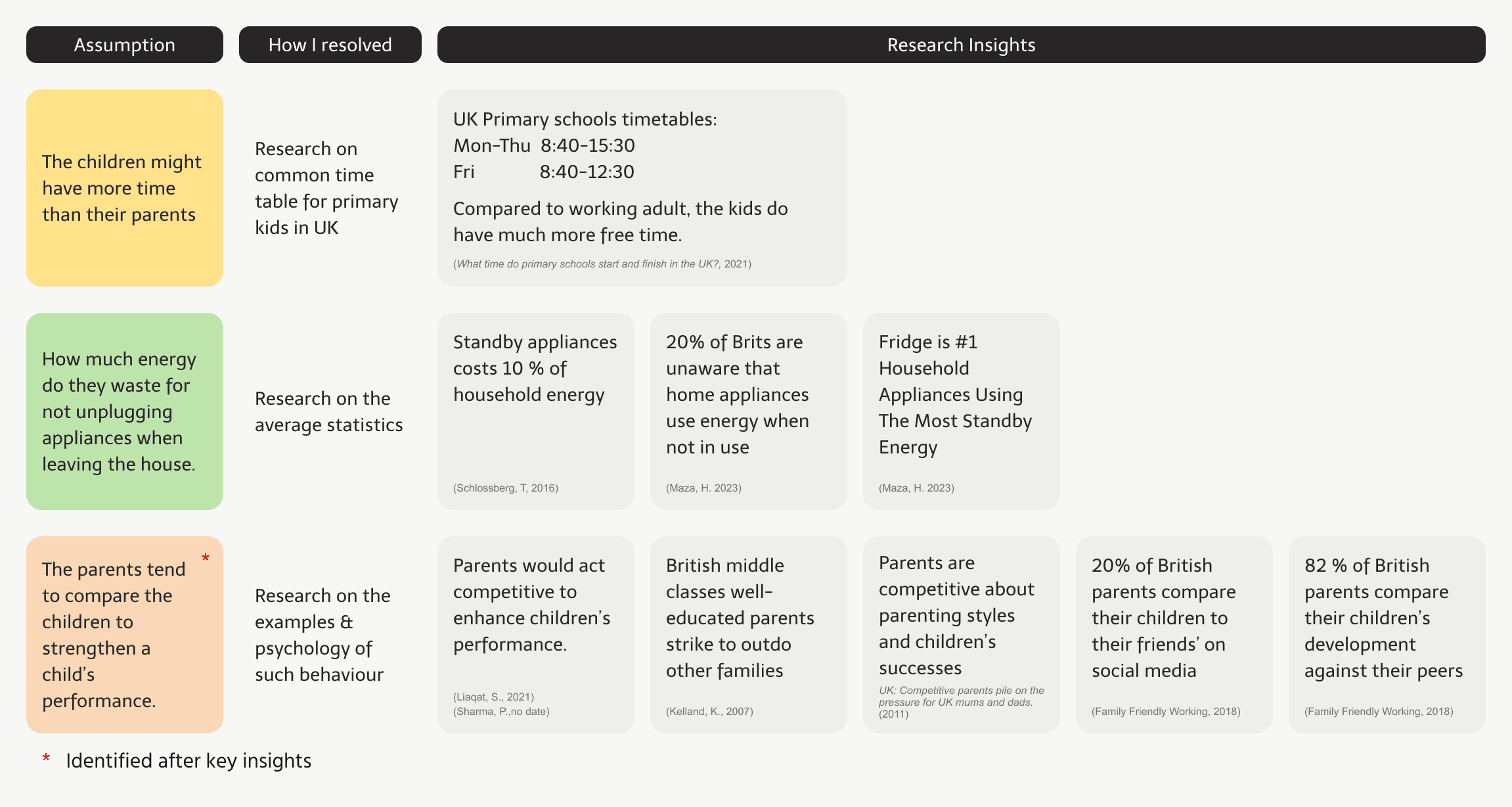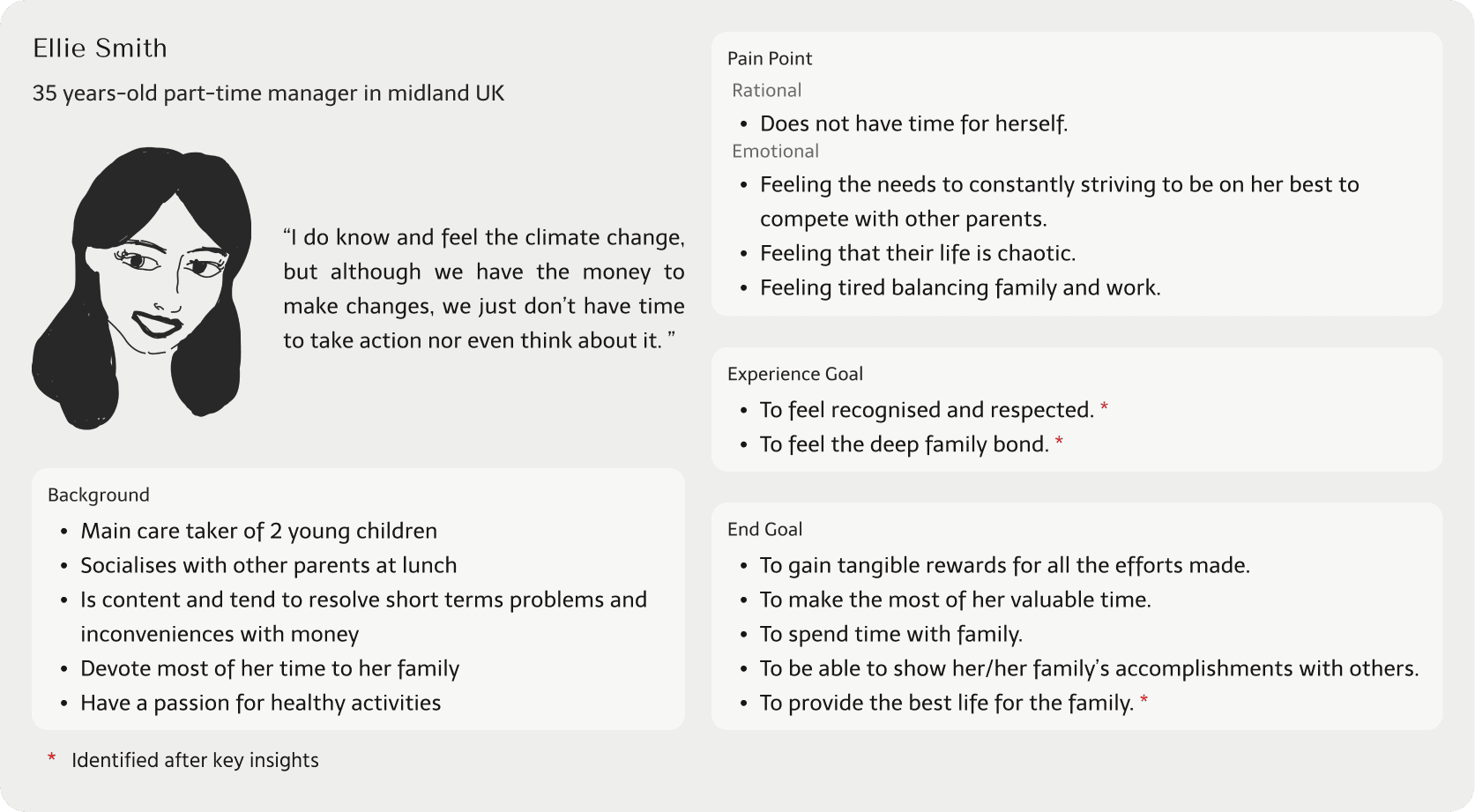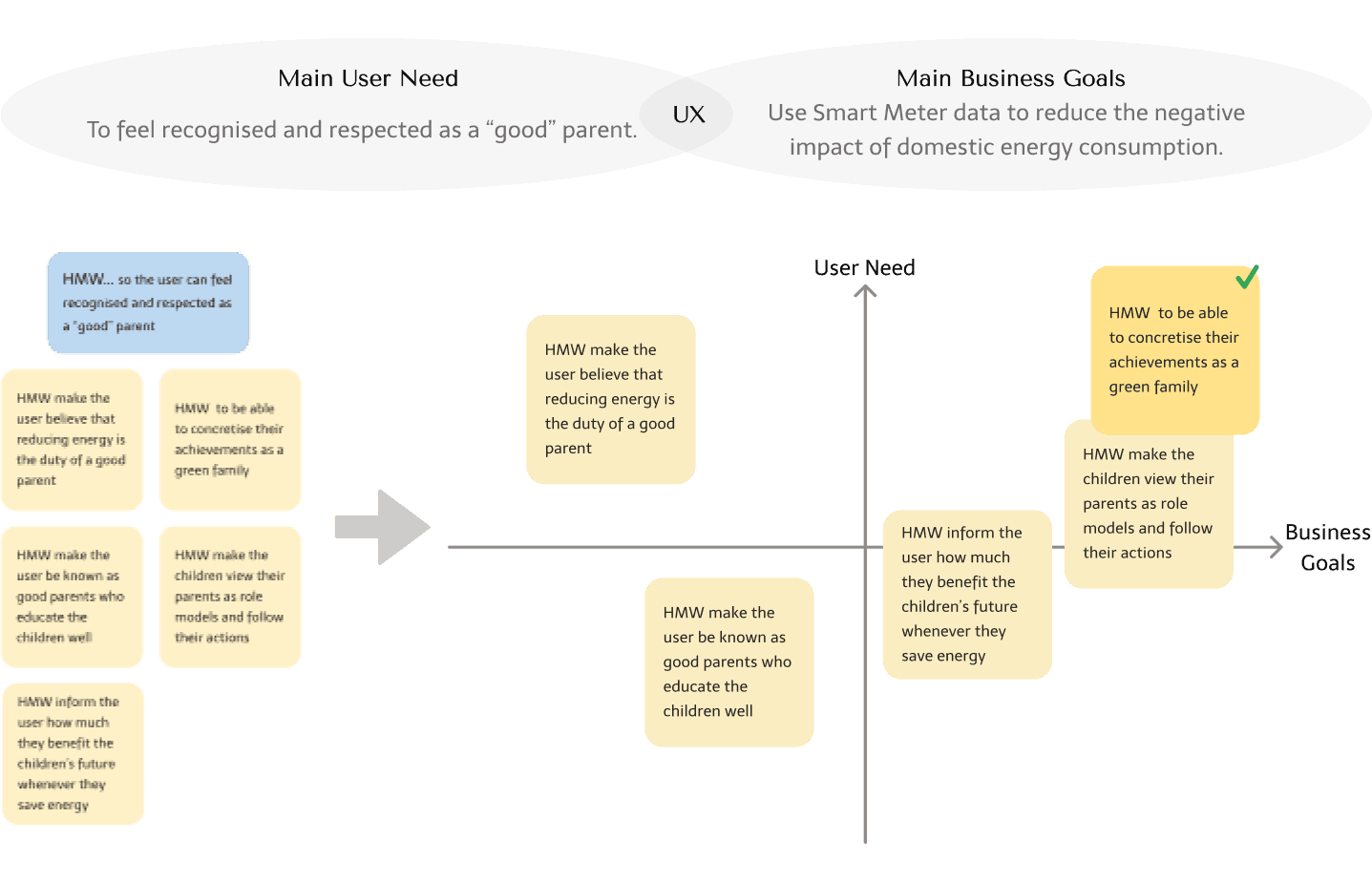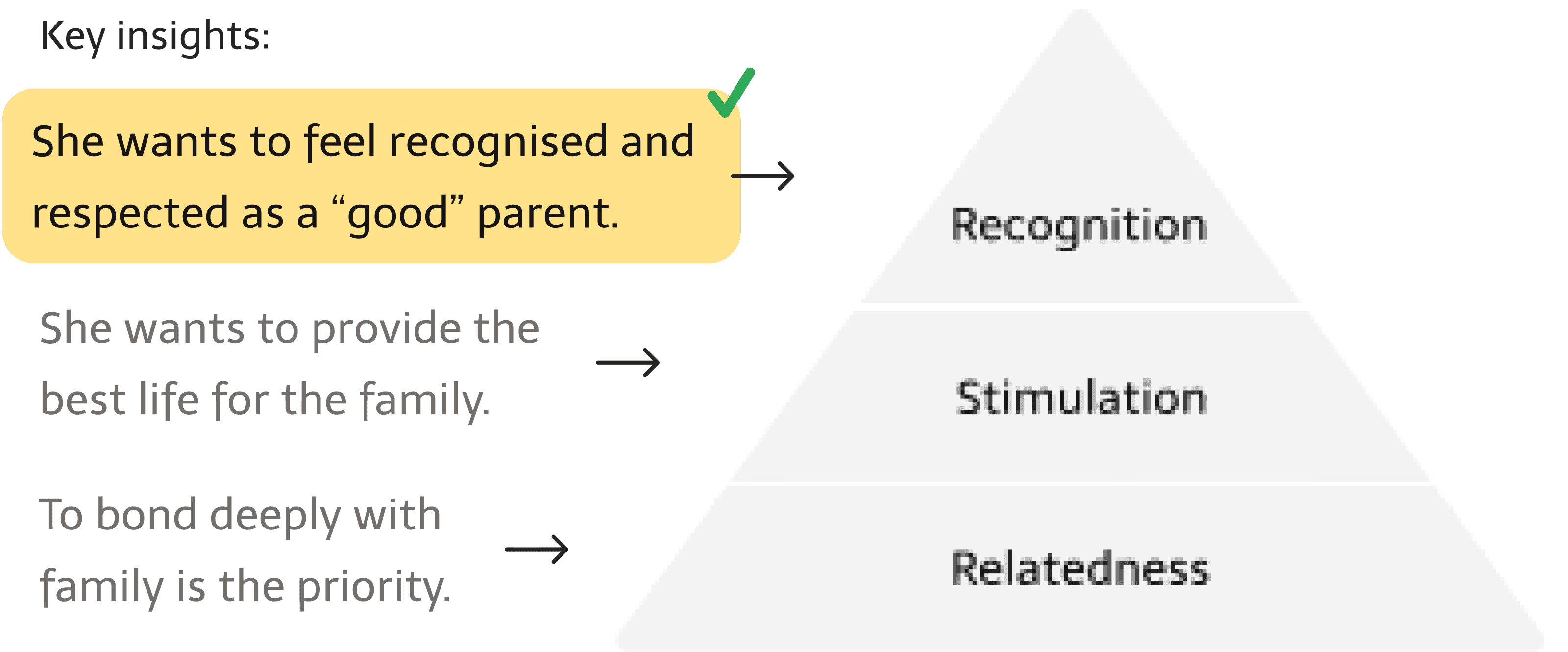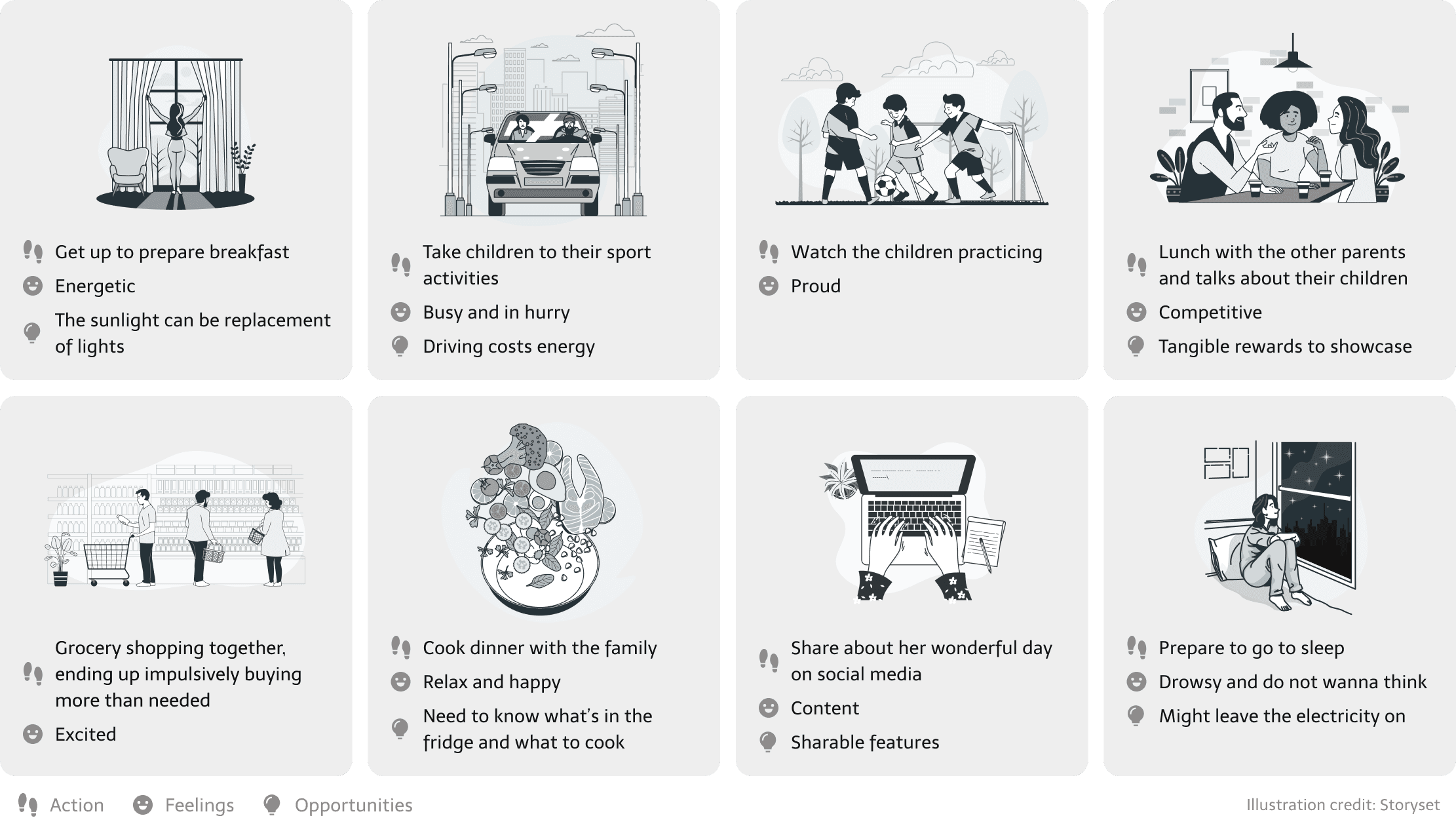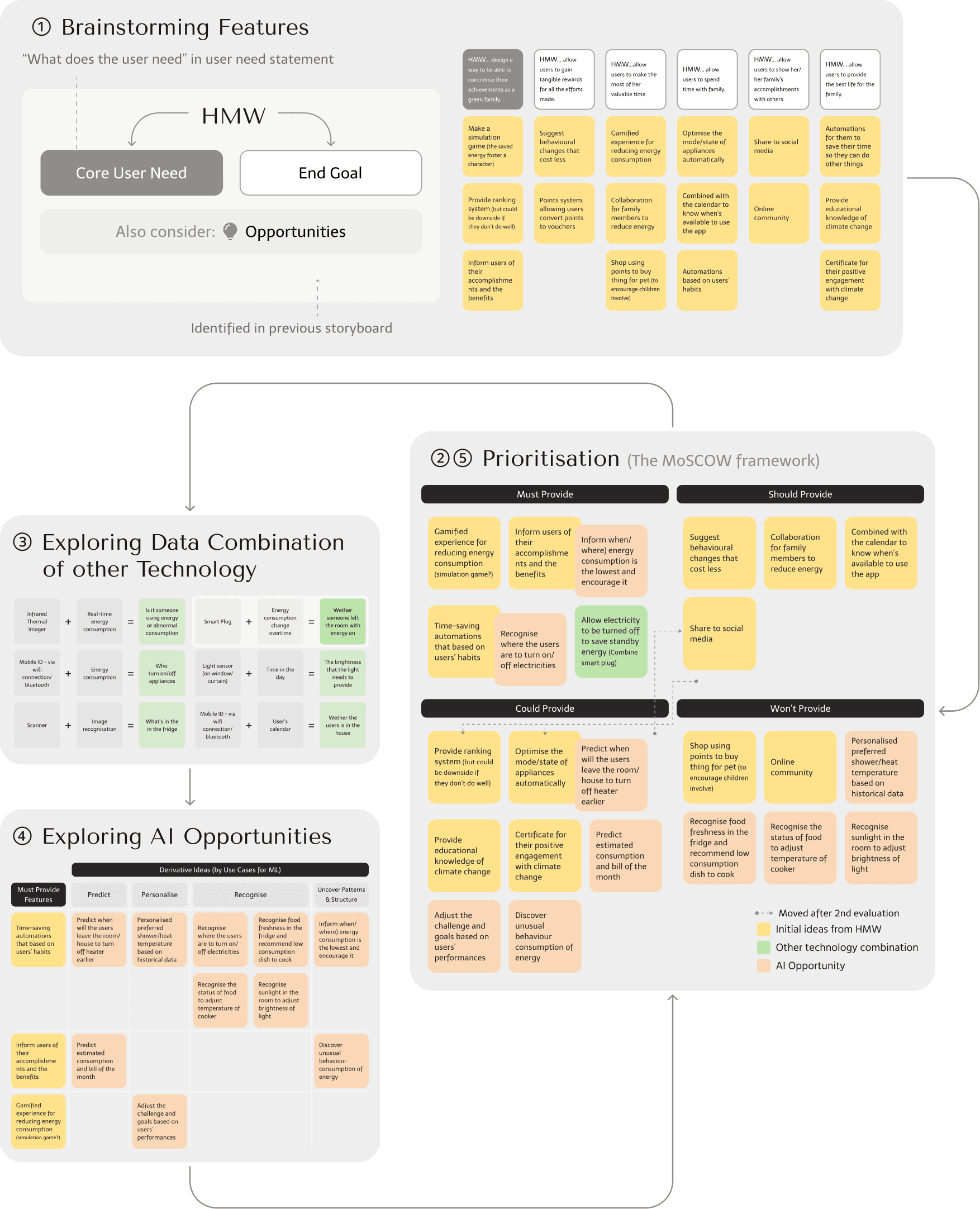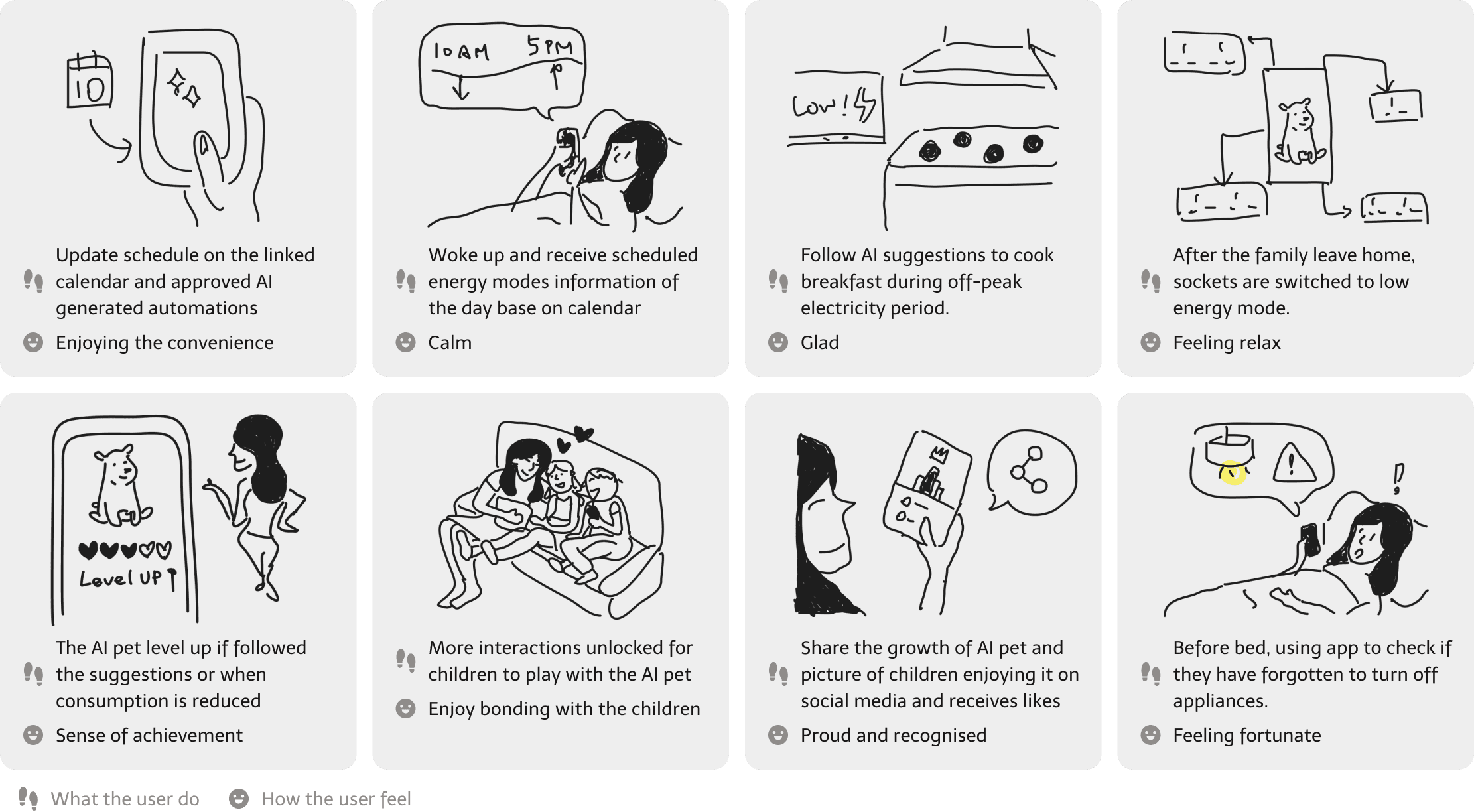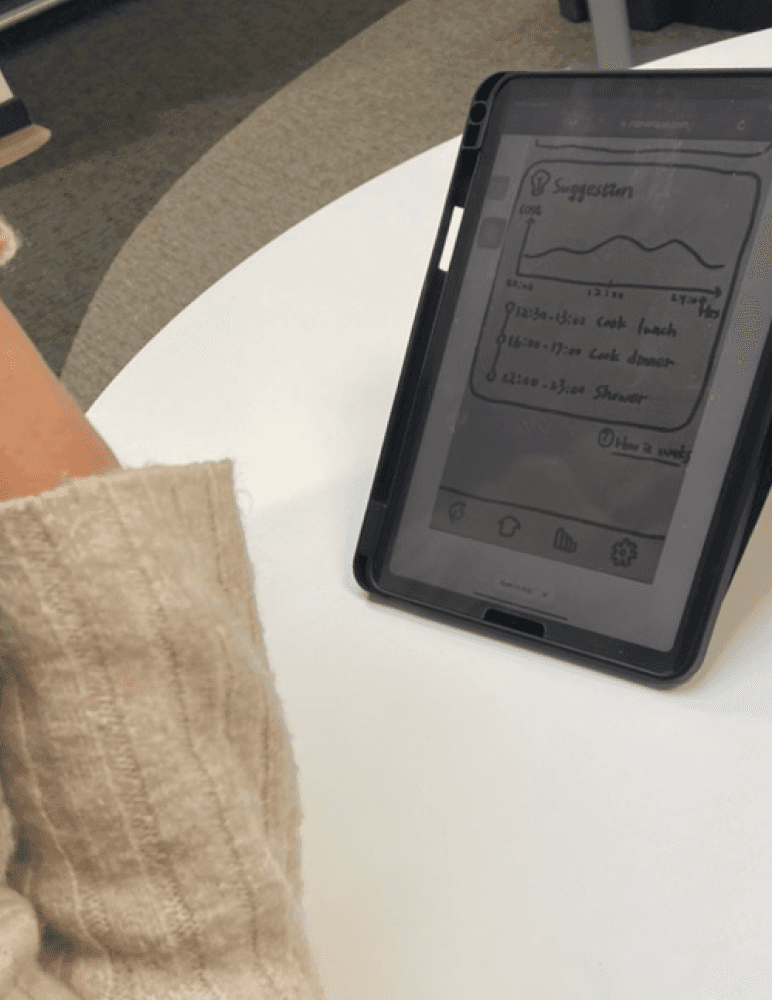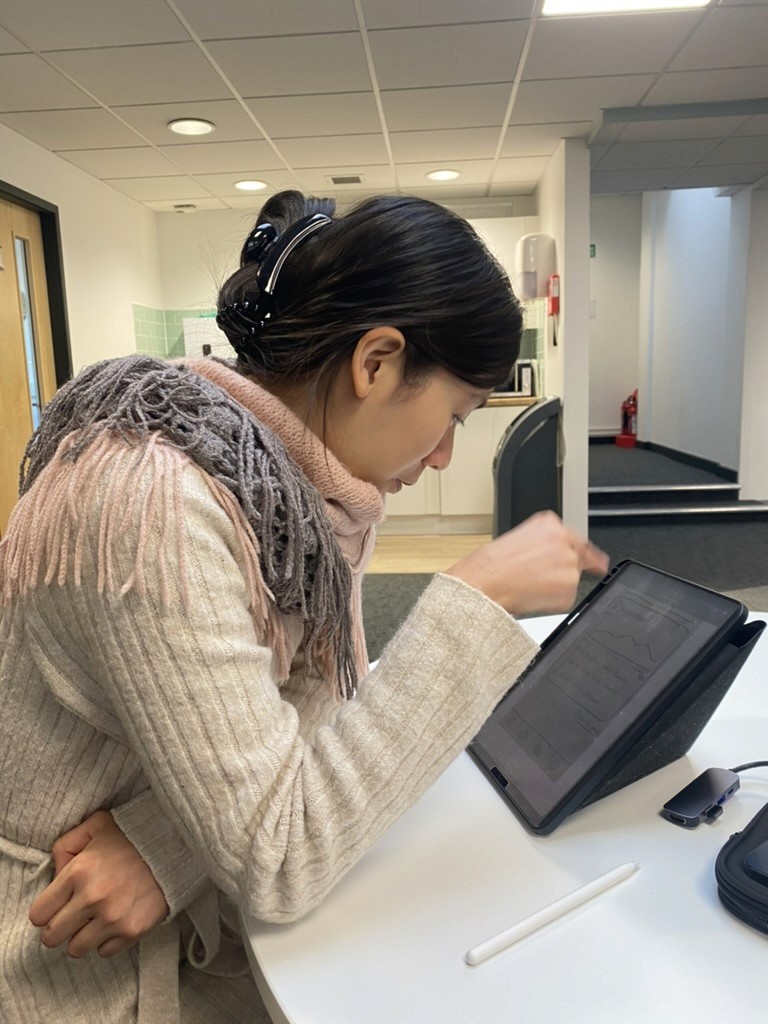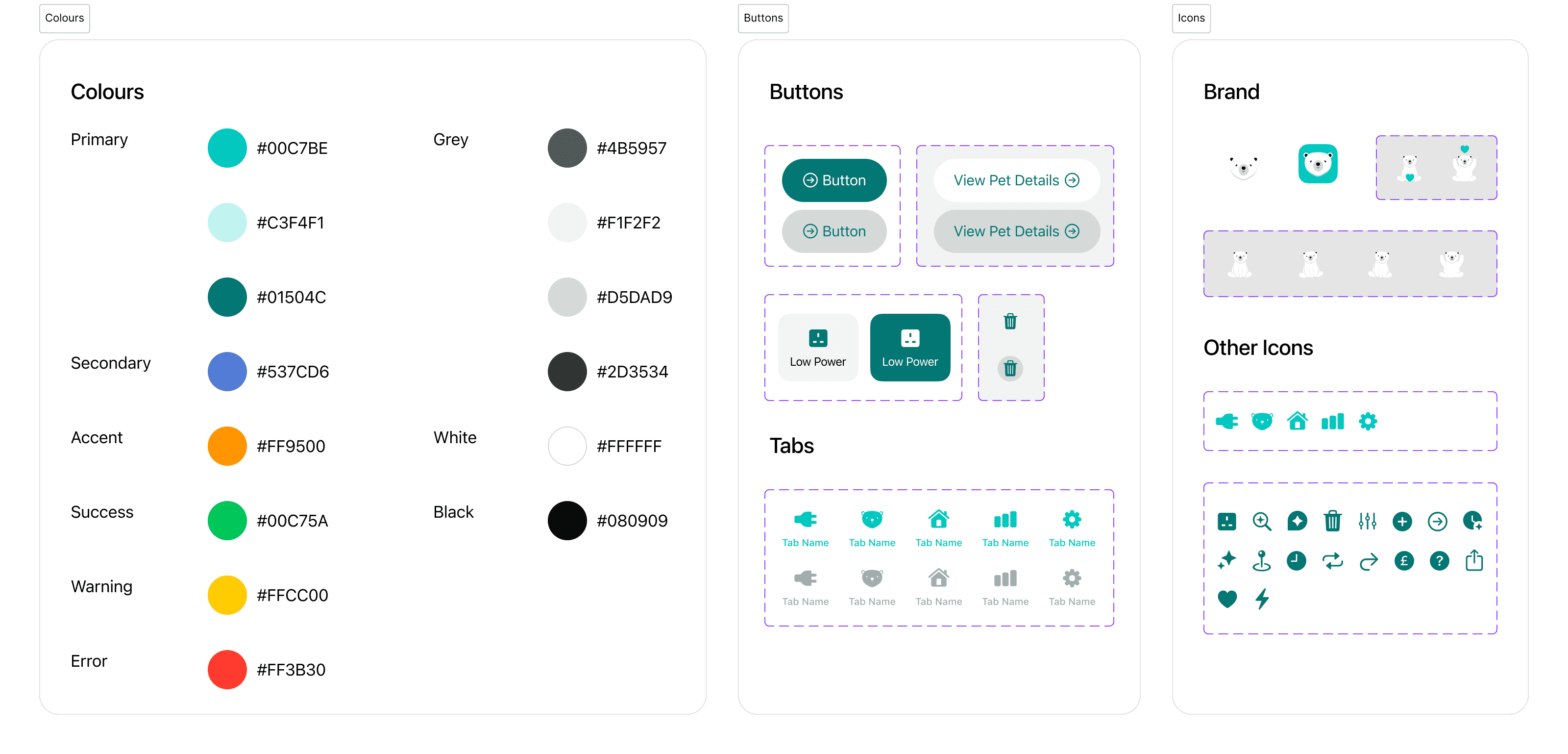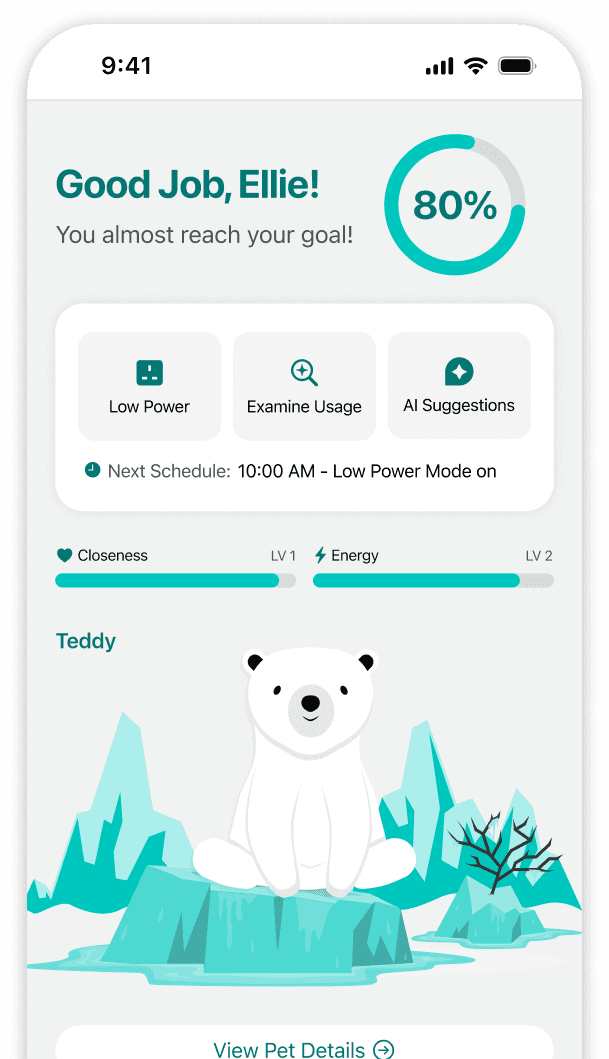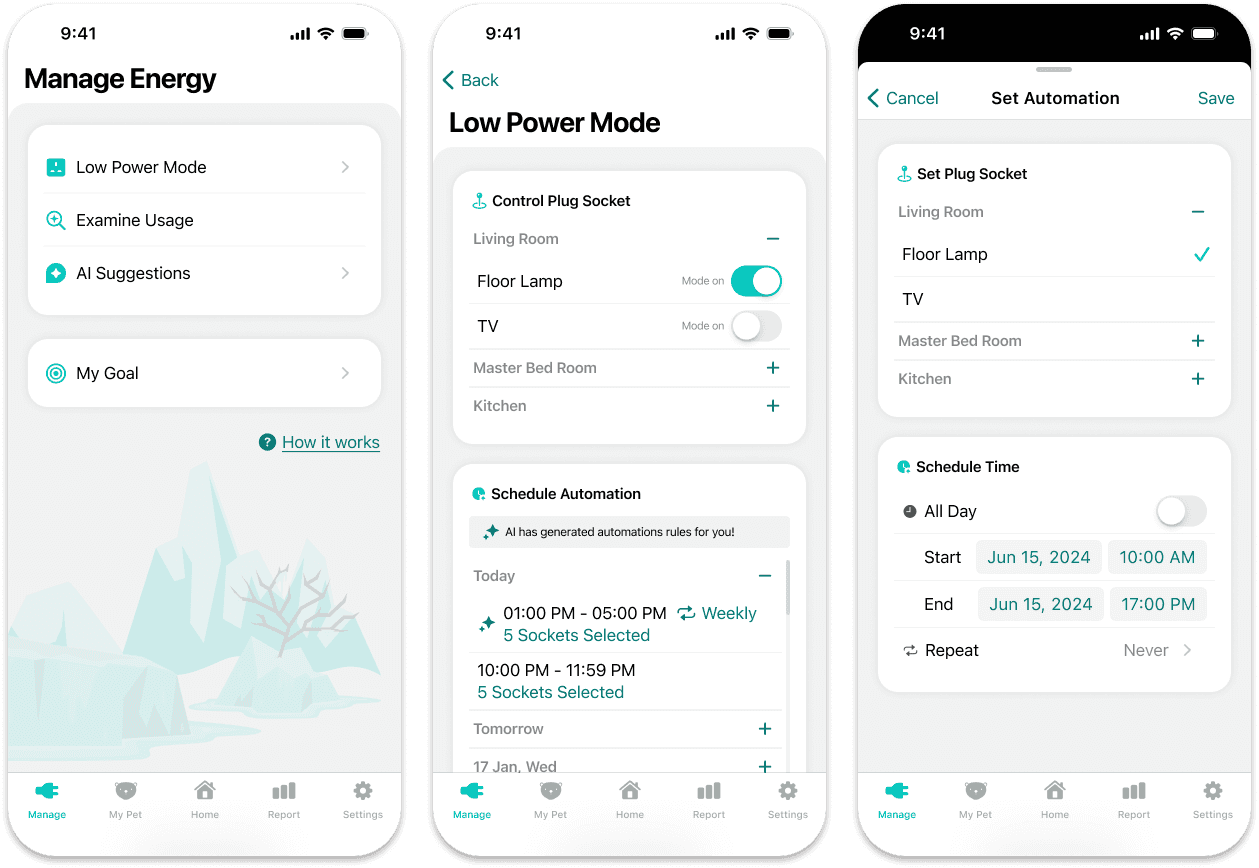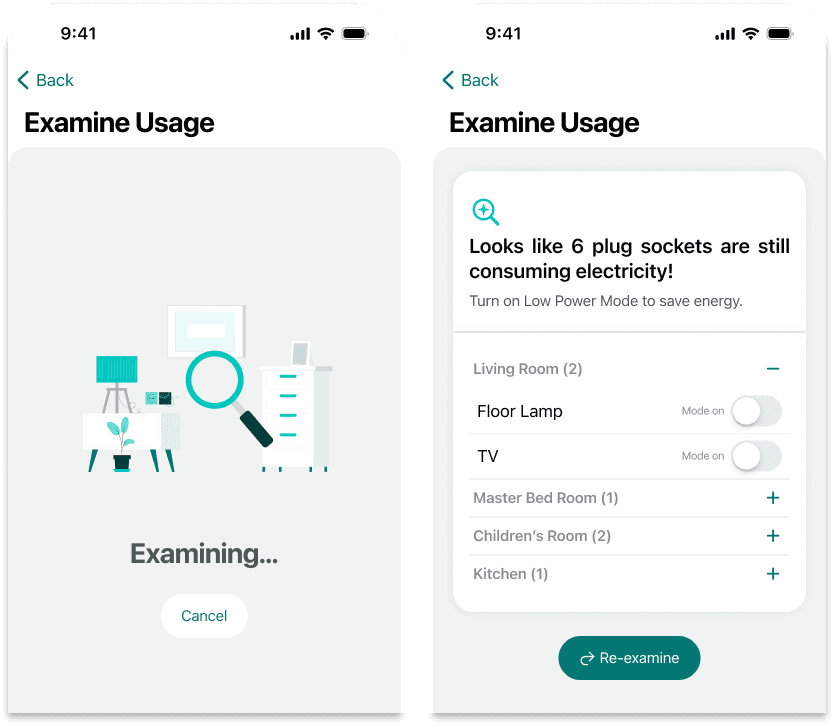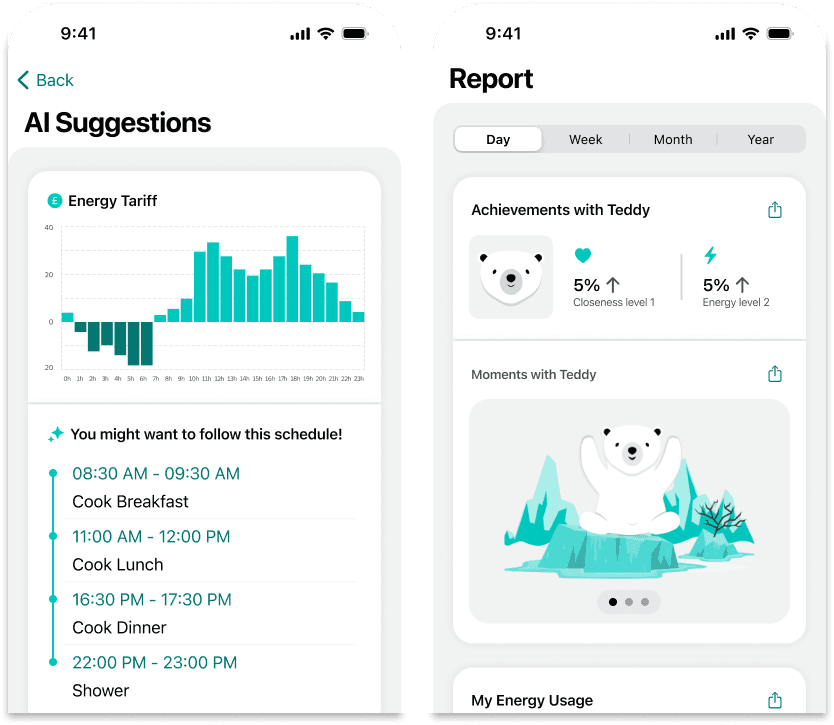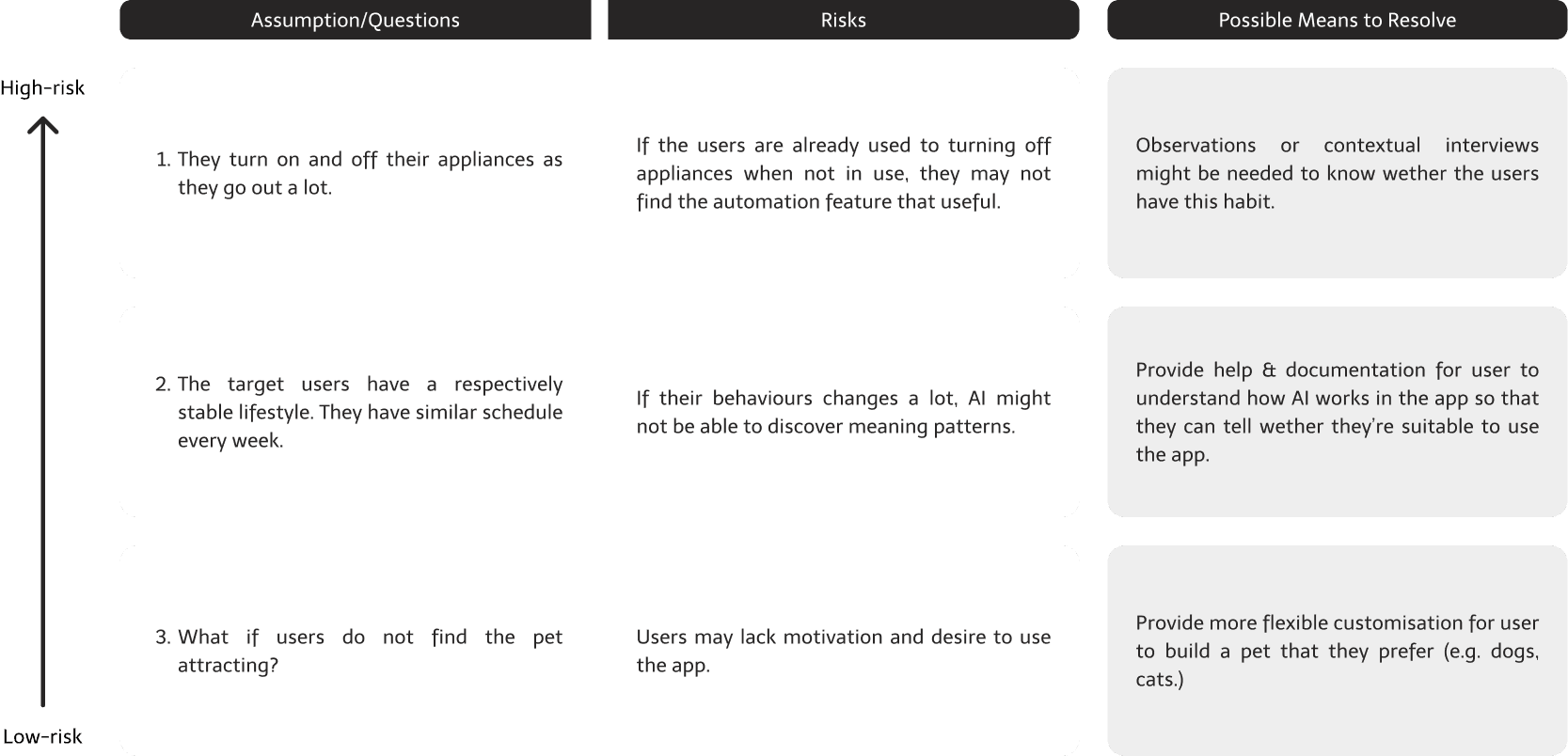Energy Bear: Gamified Energy Saving App
Side Project - 2023
# UI Design
# UX Design
# APP
My Role
Emily Lin (Researcher/Designer)
My Deliverables
Secondary Research, Data Analysis, User Interface Design, User Testing, Prototyping, Design System
Timeline & Duration
Nov 2023 - Jan 2024 (7 weeks)
Design Process
The process was framed with a hypothesis-driven approach, which aligns with the lean and agile method commonly adopted in the industry, This approach allows rapid iterations and implementations.

Product Discovery
Background
Climate Change & Energy Consumption
Energy consumption of households plays an important role in climate change, their relationship is as illustrated.
of harmful greenhouse gas emissions are from energy sector.
of total greenhouse gases emissions in the UK are from households.
Benefits of Smart Meter
trees would be equivalent to the CO2 savings the UK could achieve if everyone used a smart meter.
of CO2 saving in homes will be contributed by smart meters.
Problem Statement
Target User Group

We might have the money to make changes, but we just don’t have the time.
The “young good life” family
To cash-rich but time-poor young parents, family is the priority. They are proud and competitive as a family.
The “ME” archetype
They mainly care about the benefits for themselves and their family and do not usually put much time or effort into other things.
Established Liberals
With financial security, they have comfortable, trusting and untroubled perspective in general (Climate Outreach, 2022)
+
Focus Area
Reducing their domestic energy consumption and engage positively with climate actions
Problem Statement
The COM-B model was used to recognise possible behaviours of the target user and to identify underlying opportunities for behaviour changes.
Assumptions Mapping
The Assumptions and Questions toolkit from IBM (2018) was utilised to identify high-risk and uncertain assumptions.
After analysing behaviour assumptions, 5 aspects, colour-coded as below, of assumptions and questions were further collected and evaluated. An action plan was also built to resolve high-risk and uncertain ideas, and their position on the matrix would be moved if addressed.
Assumptions Mapping
According to the action plan of assumptions mapping, it was found that some high-risk and uncertain ideas might be resolved with secondary research, thus research of the following issues was conducted:
Proto-Persona
A proto-persona was created to better understand the user and to guide further direction.
Key Insights
The key insights were extracted from emotional pain points to unpack what the user’s feelings tell us. The laddering technique was adopted to explore the deeper meanings and causes. In the end, I found 3 key insights that indicate the underlying emotional needs/goals of the user.
Feeling the needs to constantly striving to be on her best to compete with other parents.
She has lunch with other parents regularly.
She bonds with the community through kids’ activities.
Conversations are always about kids’ performances.
The parents tend to compare the children.*
The parents prefer to think their children are the best.
The competitiveness is to feel superior to others.
She wants to feel recognised and respected as a “good” parent.
Feeling that their life is chaotic.
No time to plan or organised things in life.
She is always out and seldom be at home.
She go to the children’s activities with them.
The family do things and spend time together.
The family has a close and amiable relationship.*
She choose to spend her time with the family
To bond deeply with family is the priority.
Feeling tired balancing family and work.
Her every-day schedules are always very busy.
She have to take care of children, socialise with other parents, and keep a part-time job.
The conversations always surround the children’s performances.
Most things she does are for the family.
She is devoted to her family.
She wants to provide the best life for the family.
Emotional pain points
Key insights
* New assumptions
User Need statement
➊
The user + context
part-time manager and a socialised mother
active and passionate mother
busy but devoted young mother
➋
What does the user need
How Might We statements focused on the chosen insight were used to ideate what the user needs from this app. Since both user needs and business goals are crucial, the statements were prioritised using the matrix below. In the end, “to be able to concretise their achievements as a green family” was found most suitable.
➌
What does the user want to achieve
To understand why is the need important to the user, I referred to the 13 fundamental psychological needs identified by TU Delft (2020) and found "recognition", "stimulation", and "relatedness" to best match the key insights of the persona. Also, after prioritisation, "recognition" was considered the most significant.
Understanding user’s journey
A user journey of a typical weekend of Ellie was created to break down what the user might usually do and feel throughout the day. This was also useful to identify opportunities in every task.
I believe there is an opportunity to design a mobile app for busy but devoted young mothers that enables them to concretise and share their achievements as a family and overcomes their constant struggle to compete with other parents so that they can feel recognised and respected.

Design & Validate
Design Principles
Encouragement
We should foster the users’ self-value and encourage internal pride in their parenting performance by providing them with a sense of achievement and recognition.
Connection
Our app should help deepen emotional bonds among the family members. It should connect the family through warm and positive shared experiences.
Empowerment
We hope to create a user experience that empowers mothers to balance their busy lives efficiently and confidently with our seamless, time-saving automation and information.
Features Iteration Process
Final Feature Set
Context Scenario
Unlike the previous high-level storyboard, this user scenario describes a more detailed experience of how the user could interact with the app.
Main user Flow
Testing Prototype
➊
Question
How can we allow users to customise automations?
How can we let users find suggestions easily?
How can we let users know wether the is low power mode is on or not?
How can we let users know what is low power mode
➋
Plan
Main aim
Top-level: Does the concept make sense?
Flow:
Is the main flow workable?
➍
Reflection
Design Issues to resolve
How did I go about resolving them

Deliver
Design System & UI Components
Final Design
➊
Positive Engagement
Users can engage positively with climate change while enjoying the app.
Encouragement & Recognition
Using positive language to encourage users to continue using the app and feel recognised for doing the right thing.
Useful Features for Daily Life
From managing energy usage while leaving the house to things to do at home, each feature can be helpful for users’ everyday use.
Desirable Experience
While users getting devoted to their pet, the app would not only be a useful, energy-saving tool but more a desirable and meaningful journey.
➋
Solving Users’ Pain Points
With automation, users do not have to invest lots of time in it, empowering them to spend time on family or their work.
➌
Reducing Energy Use
Users can effortlessly spot the electricity waste in the house to reduce energy use.
➍
Less Chaotic
With suggested timetables, the chaotic lifestyle would no longer be a pain point.

Reflection
Other high-risk uncertain issues
While most of the high-risk uncertain assumptions and questions identified during the discovery stage have been addressed with secondary research (page 6), I still found a couple of potential high-risk uncertain issues after reflecting on the final design:
